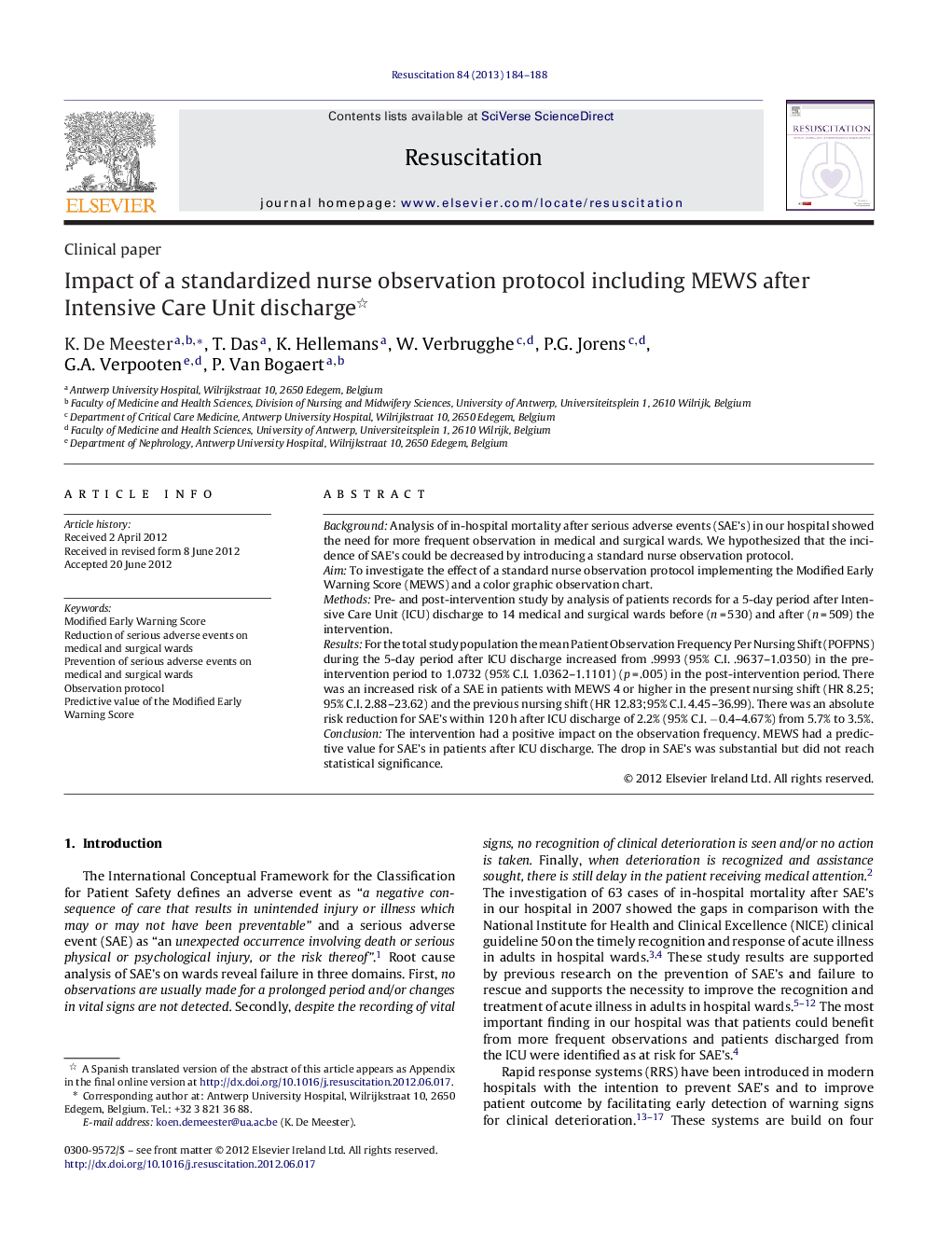| Article ID | Journal | Published Year | Pages | File Type |
|---|---|---|---|---|
| 3008324 | Resuscitation | 2013 | 5 Pages |
BackgroundAnalysis of in-hospital mortality after serious adverse events (SAE's) in our hospital showed the need for more frequent observation in medical and surgical wards. We hypothesized that the incidence of SAE's could be decreased by introducing a standard nurse observation protocol.AimTo investigate the effect of a standard nurse observation protocol implementing the Modified Early Warning Score (MEWS) and a color graphic observation chart.MethodsPre- and post-intervention study by analysis of patients records for a 5-day period after Intensive Care Unit (ICU) discharge to 14 medical and surgical wards before (n = 530) and after (n = 509) the intervention.ResultsFor the total study population the mean Patient Observation Frequency Per Nursing Shift (POFPNS) during the 5-day period after ICU discharge increased from .9993 (95% C.I. .9637–1.0350) in the pre-intervention period to 1.0732 (95% C.I. 1.0362–1.1101) (p = .005) in the post-intervention period. There was an increased risk of a SAE in patients with MEWS 4 or higher in the present nursing shift (HR 8.25; 95% C.I. 2.88–23.62) and the previous nursing shift (HR 12.83;95% C.I. 4.45–36.99). There was an absolute risk reduction for SAE's within 120 h after ICU discharge of 2.2% (95% C.I. −0.4–4.67%) from 5.7% to 3.5%.ConclusionThe intervention had a positive impact on the observation frequency. MEWS had a predictive value for SAE's in patients after ICU discharge. The drop in SAE's was substantial but did not reach statistical significance.
